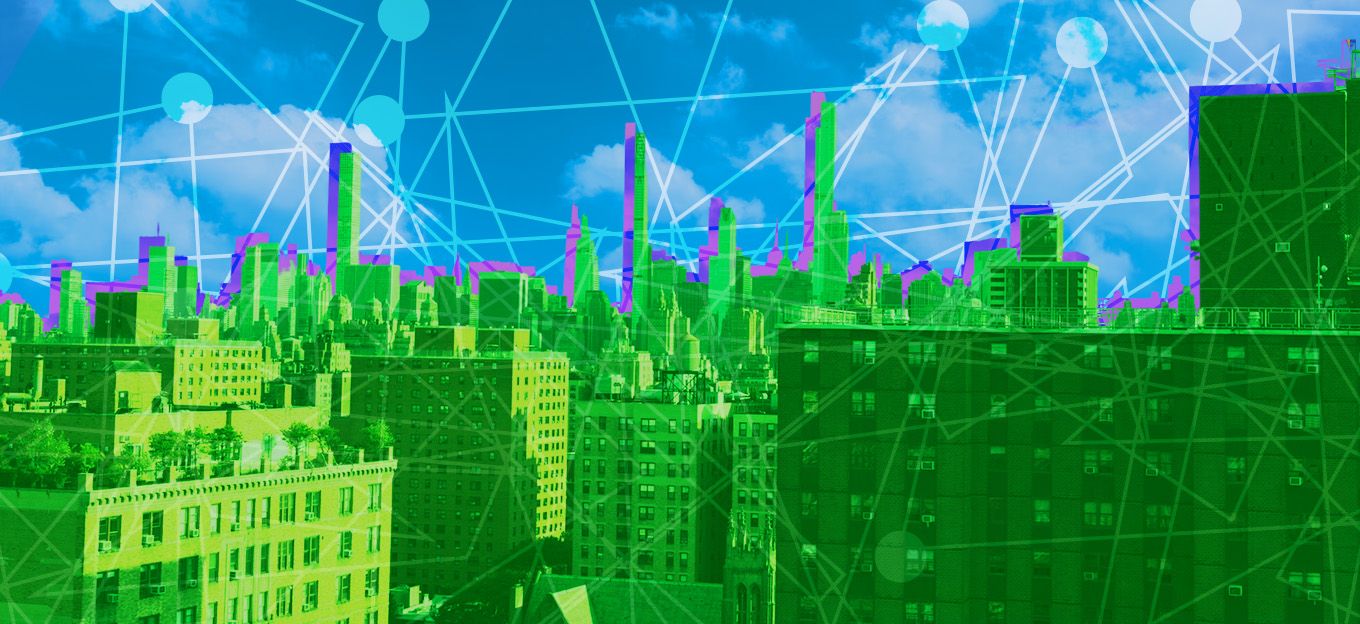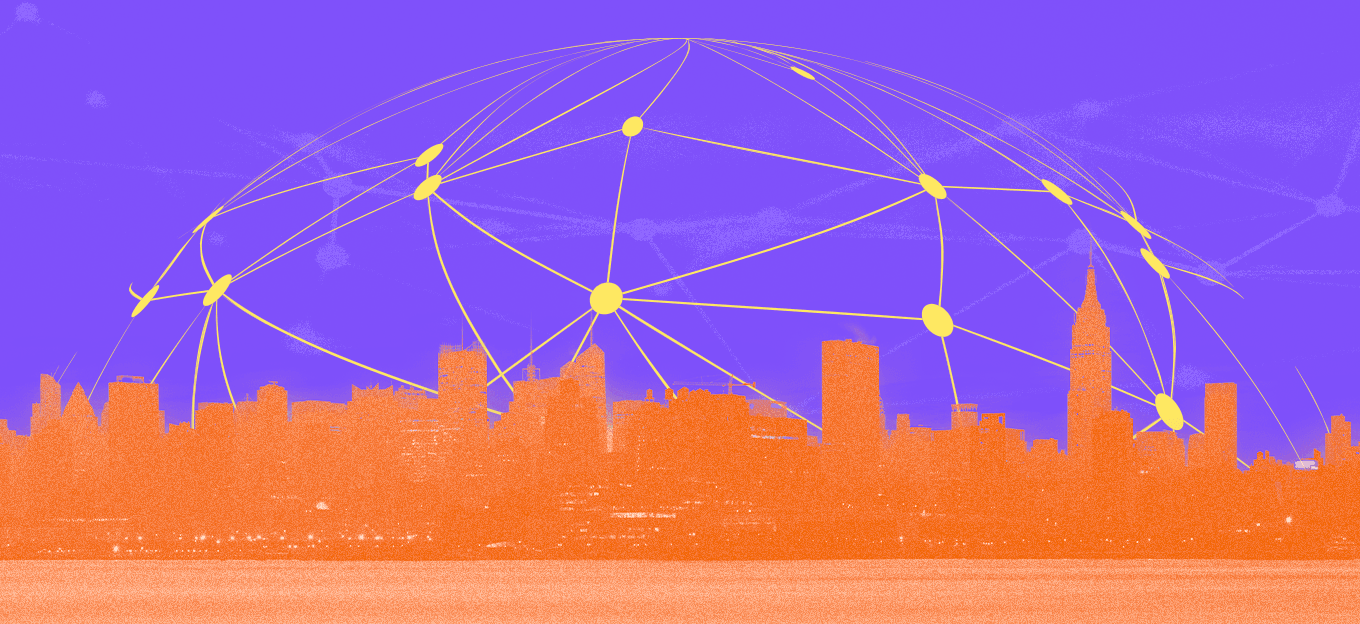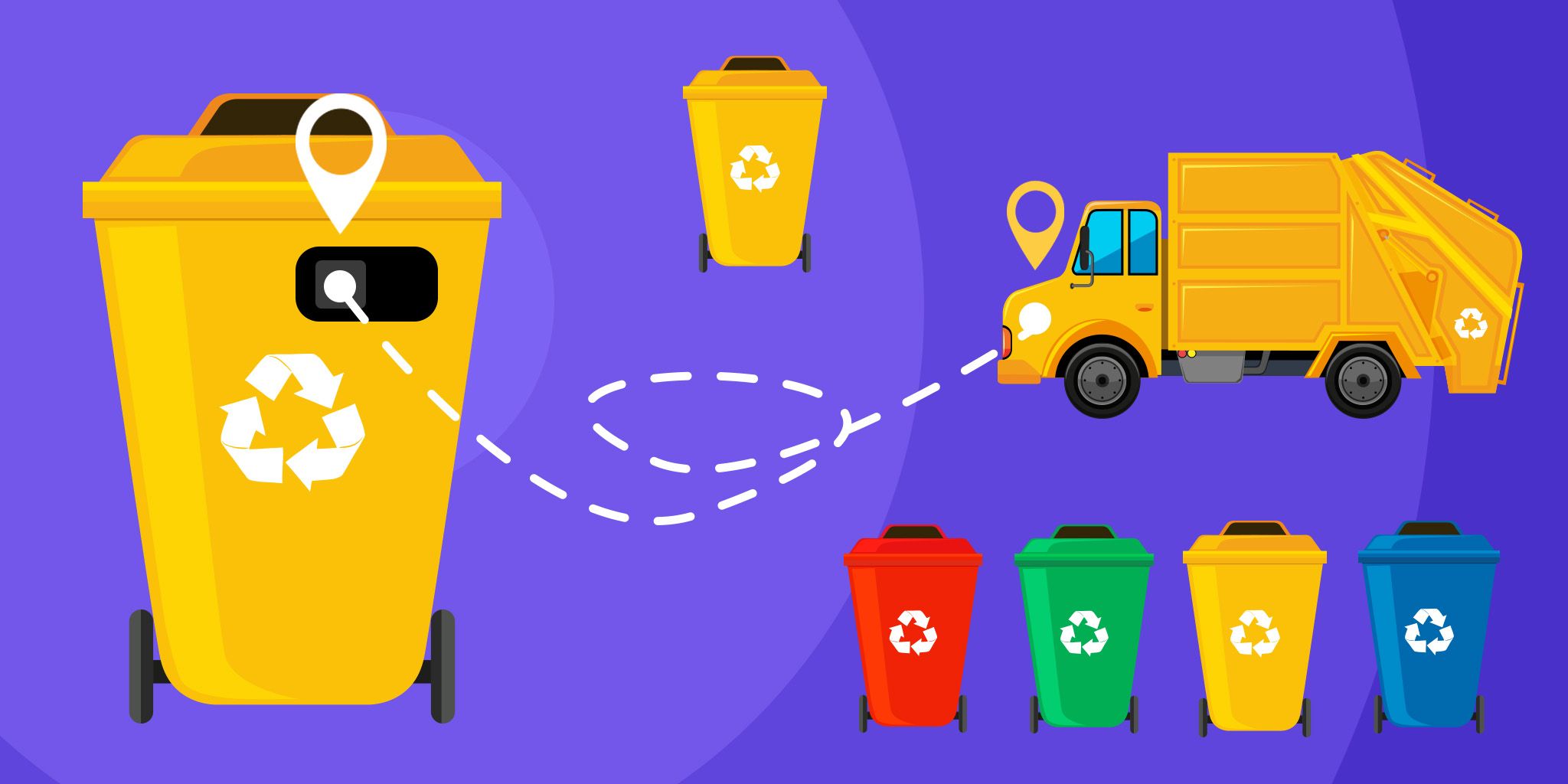3 Smart Cities in 2021: How Smart Cities Use IoT
3 Smart Cities in 2021: How Smart Cities Use IoT
- Last Updated: December 2, 2024
TEKTELIC Communications Inc.
- Last Updated: December 2, 2024



In smart city projects, IoT is a key enabler, and a number of other technologies and applications must be used to make smart city projects a reality. Smart cities are becoming increasingly popular. However, there is much more to smart cities development than just putting together a website and hoping it will take off. The ability to respond in an instant is an important factor that has led to a shift in city formation. To develop smart city technology, cities must have access to information on sustainability, resilience, and artificial intelligence to successfully analyze data and improve city life.
Besides, sustainable smart cities also help improve infrastructure. These systems can monitor air quality and waste management, which is already proven in the examples of such cities as Singapore, Zurich, and Oslo.
To develop smart city technology, cities must have access to information on sustainability, resilience, and artificial intelligence to successfully analyze data and improve city life.
What is a Smart City?
A smart city is a technologically advanced urban area. Generally, it is a digitalized version of a physical city. It is one of the newest forms of technology as it uses different kinds of electronic methods to collect data. It integrates all the different layers of a city's infrastructure.
This includes sensors to detect people walking by the street, sensors to detect when it is dark outside our other sensors that might be necessary for effective technological performance around the city. For example, a light-detecting sensor enables a city to turn on the streetlights automatically when necessary. This technology is used by governments to make decisions regarding transportation and climate.
The concept of a smart city involves bringing together a number of fields of knowledge. It includes public administration and e-government. The latest developments in this field have made it possible for cities to create and deploy their own intelligent systems. Developing a sustainable smart city is an important part of a city's development, so the concept of a sustainable smart city must be embraced.
IoT Solutions Role in Smart Cities Development
Internet of Things (IoT) solutions have played a key role in the development of sustainable smart cities. They help in reducing power consumption and costs, as well as play a significant role in preventing crime. They can be deployed in public places to provide real-time monitoring, analytics, and decision-making tools. This can also be used to track and predict crime scenes.
The IoT network allows cities to track and improve the safety of public transportation. The use of IoT sensors in public transport systems can provide a wealth of data about the journey of a passenger. With this information, smart public transportation operators can improve the traveling experience.
There are many advantages of using IoT in a smart infrastructure. For example, it can provide enhanced security and convenience. It can also be used to improve efficiency in data collection and management. The IoT in a city is the way to increase the quality of the urban lifestyle.
How do IoT Technologies Build Smart Cities?
IoT smart city solutions can be widely used in city infrastructure. For instance, smart fire sensors can alert citizens of fire and coordinate rescue robots, which will significantly improve the safety of city residents. Other IoT applications are also eco-friendly and power-efficient.
They can also monitor speed limits and other factors that affect the quality of life. And because IoT solutions use advanced sensors, they can also help develop sustainable commerce models. This makes it easier for cities to build smarter infrastructure and services.
Best Smart Cities Using IoT Devices
Currently, there are more and more sustainable smart cities emerging in the world. They focus on the optimization of air quality monitoring, renewable energy, green energy systems, optimization of traffic flow, waste management companies, and other sustainable smart solutions in urban areas. Cities can realize a lot of innovative infrastructure ideas using IoT, that is why IoT technologies are of great importance.
Singapore
In recent years, Singapore has sought to become one of the world's first official sustainable smart cities to harness the power of the Internet of Things. With one of the oldest populations in Asia, Singapore is addressing senior living conditions in order to reduce the risk of accidents.
Increasing the number of autonomous cars on the road has reduced accidents and loneliness among senior citizens. The government has also installed surveillance cameras and widened sidewalks in certain areas. With these innovations, the government is taking the lead in making Singapore a smart city.
Singapore has many aspects that help make it a smarter place. Its people are more connected than ever, and the government is using digital technologies to promote a smart life. Using digital technology to improve public safety is a key element of this approach. A smart city enables citizens to access information from anywhere. Such highly advanced communication technologies facilitate the city's digital infrastructure development and put Singapore in one line with the best IoT smart cities.
Singapore has a rapidly growing technology ecosystem. The land transport authority has recently expanded its autonomous vehicle pilot zones and is working to integrate active mobility with public transportation. By integrating a smart city with the existing transport system, people can live in an environment that is able to handle any situation that may arise. City officials want to make the city a "citizen-centric" one.
Additionally, Singapore's government is highly concerned with the environmental situation and has already taken a lot of initiatives that push Singapore to the list of the world's smartest cities. For example, Singapore has implemented a smart waste bin system. It is aimed at improving air quality and fitting the United Nations regulations on environmental policy.
What is more, Singapore has big plans for the future integration of smart city technologies. Some of the more innovative services are already in place. For example, the Singapore Police Force has a web-based electronic police center that helps citizens file police reports. The system also allows citizens to access information and other information they might need online.
Another initiative is the Singapore Power mobile app. It allows citizens to see their monthly bills and submit meter readings, and it also helps them audit their homes' usage. With the help of IoT, Singapore can become a global leader, and with this understanding, the government allocates a lot of resources on realizing smart city projects.
Zurich
Zurich, being listed as the second smartest city is attempting to become the best in the world with a number of initiatives. The innovations team is working with the municipal government, SBB, and various electrical utilities in the Canton of Zurich. They are collaborating with a wide range of companies to make it easier for citizens to participate. With a lean approach, they are able to make the entire process transparent, which makes it a lot easier to implement.
Zurich takes a lot of initiatives focused on decreasing power consumption and optimizing digital security. Other initiatives include reducing greenhouse gas emissions, circular waste management, and implementing technology-based plans to keep the city safe and crime-free. All of these initiatives are possible due to the effective use of smart sensors.
Zurich supports innovative, responsible, and sustainable development. It seeks to improve public transport, increase energy efficiency, and reduce pollution. It also offers climate-neutral mobility. Zurich's initiative is aimed at increasing the quality of life in the city.
Additionally, Zurich is pursuing innovative projects to overcome its challenges. The concept of smart cities is already a big challenge. Not only is it difficult to implement but it also requires a thorough understanding of people and society. This is why Zurich becomes a role model in the concept of Swiss smart cities.
Zurich has invested in fiber-optic networks and top-level infrastructure. In addition to this, Zurich's smart streetlights can be a great example to other cities around the world. Such a creation of connected devices and networks will make Zurich more an attractive place to live in.
Sure thing, Zurich is not a pioneer in the smart city movement but it shows a really impressive development lastly. Its initiatives include the creation of "smart communities" that are part of larger metropolitan areas. Zurich's smart communities will be able to provide the services that people need.
It will also allow the city to expand its public mobility in a resource-saving way. Zurich is planning to develop a mobility platform to serve its citizens and to help them navigate the city. With smart communities, Zurich will have safer streets and an easier way for a city to manage direct traffic.
Zurich's transportation, energy, and water suppliers are working together to create a sustainable city. The city's municipal government has taken a lead in this movement, with the integration of smart traffic lights, smart metering, smart grids, and other related projects. They are working with innovative companies to develop integrated solutions that not only increase efficiency and reduce costs but also promote a better quality of life for residents.
Oslo
The Norwegian capital stands among the best smart cities in the world. It realizes a lot of smart city solutions, including solutions for urban traffic congestion, smart parking projects, lowering energy usage, and other urban planning initiatives. For example, the E-Street project in Oslo, Norway, is aimed at making the city's streets more efficient and reducing energy consumption.
Some of these projects focus on building new, energy-efficient buildings, retrofitting existing buildings, and testing electric buses (school buses, public buses, etc.). In fact, the project helps the city to save over 70 percent of energy. The project will also introduce new technologies like solar panels and will include energy-efficient lamps and smart lighting.
The innovative technology that is being used in Oslo's city plans is not limited to energy savings. The connected sensors in these streetlights also monitor the humidity and rain levels, enabling the city to optimize its waste collection operations. The city's streets will be connected to digital bus stops, which will let citizens know when their bus will arrive. The system will also include a parking guide for smart cars.
Another initiative, called the Climate Dashboard, aims to help the city make an environmentally friendly effort. The climate dashboard will allow citizens to follow up on environmental initiatives' progress. With the help of the Climate Dashboard, the city is taking the necessary steps to ensure its eco-friendly future.
Another initiative focuses on sustainable transportation. The region has a lot of public-private collaborations, and Oslo has several such partnerships. The city has a lot of potential for improvement. Its innovative programs include smart parking, automated streetlights, and bicycle rental points. Furthermore, it is planning to introduce a "Smart Oslo Pitch" competition that will encourage entrepreneurs to pitch their ideas and help improve the quality of life for its citizens.
The city is already working on a number of initiatives to make the city more inclusive. The city has already implemented six projects and has even made a map of its neighborhood. The project's first phase focuses on making the city greener and more sustainable. Its six smart projects, meanwhile, aim to increase accessibility for residents and improve accessibility for businesses and the local population. These ideas will help make the city more accessible to all people.
What Makes Smart Cities Successful?
Organization and Planning
For a smart city initiative to be successful it needs to be well-thought-out and organized on different levels. The city of the future should address the issues of its residents. There are various issues to solve: crime, congestion, emergency fire response, waste management, active mobility options, police security, absence of essential utilities, public transportation, and low-quality housing and public administrations.
Given the severe rivalry for talent across urban areas, dissatisfied residents are probably going leave for a more winning environment. To succeed, city leaders should focus on the prosperity, sustainability, and other essential necessities of their inhabitants.
Community Involvement
First of all, identifying the community responsible for smart city development is a vital component of a smart city creation process. This will allow smart cities to secure the power of new information and technologies. It is important to identify the community's attributes to create a smart city. What is more, it is incredibly important to study the social environment for effective smart systems management and integration.
Financial Plan
Investment management is another essential component of smart infrastructure success. The challenges are numerous, and overcoming these obstacles will require a systematic approach. In some cases, budget constraints may prevent cities from developing smart city initiatives. The city needs to invest in a variety of smart technologies, including AI, smart city applications, IoT, and smart tools as well as other smart city devices.
Established Regulations
In order to make a smart city, city officials must implement clear policies that improve the quality of life for their residents. To do this, smart cities should implement equitable policies that benefit all people. Small cities, particularly those in developing countries, must also have a public policy that protects the environment since more than half of them are facing problems with them.
By implementing innovative city services that allow effective data analysis, governments will be able to better serve their citizens and use collected data for the improvement of entire city life. By developing a sustainable strategy, smart cities will create new revenue streams and cut costs.
Conclusion
A recent report by the United Nations showed that five out of 10 people living in the world will sooner or later live in urban areas. Using these technologies, cities can improve energy consumption, energy distribution, and overall sustainability. Moreover, cloud-based IoT applications can help manage data in real-time and make quicker decisions. IoT can help cities automate many processes and provide better public safety.
A city can use IoT to monitor the temperature of its citizens, which is crucial for a healthy and sustainable environment. These services are the most beneficial solution to the city environment and the residents. That is why the decision to integrate IoT technologies into the city infrastructure is the decision that has to be made for a better quality of life and comfort. Now it's time to take a step to the future of smart life.
The Most Comprehensive IoT Newsletter for Enterprises
Showcasing the highest-quality content, resources, news, and insights from the world of the Internet of Things. Subscribe to remain informed and up-to-date.
New Podcast Episode

Moving Past the Pilot Phase in IoT and AI
Related Articles





